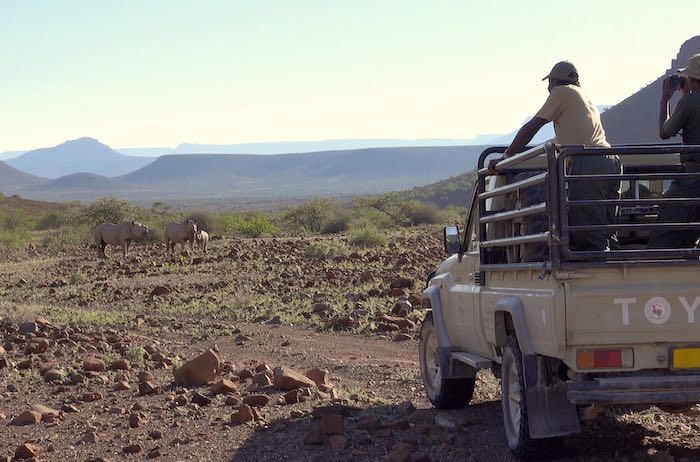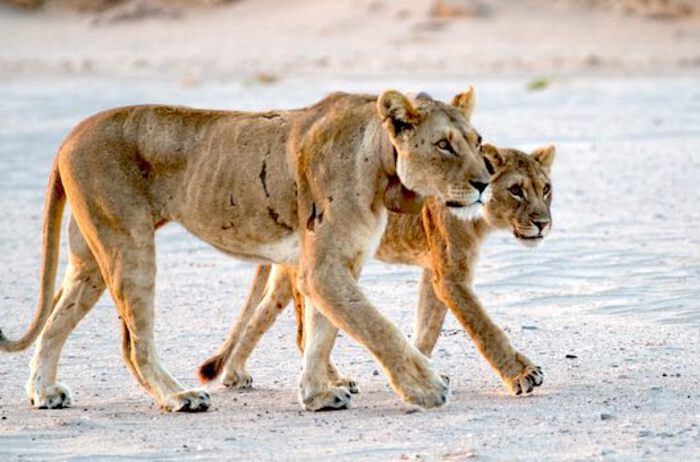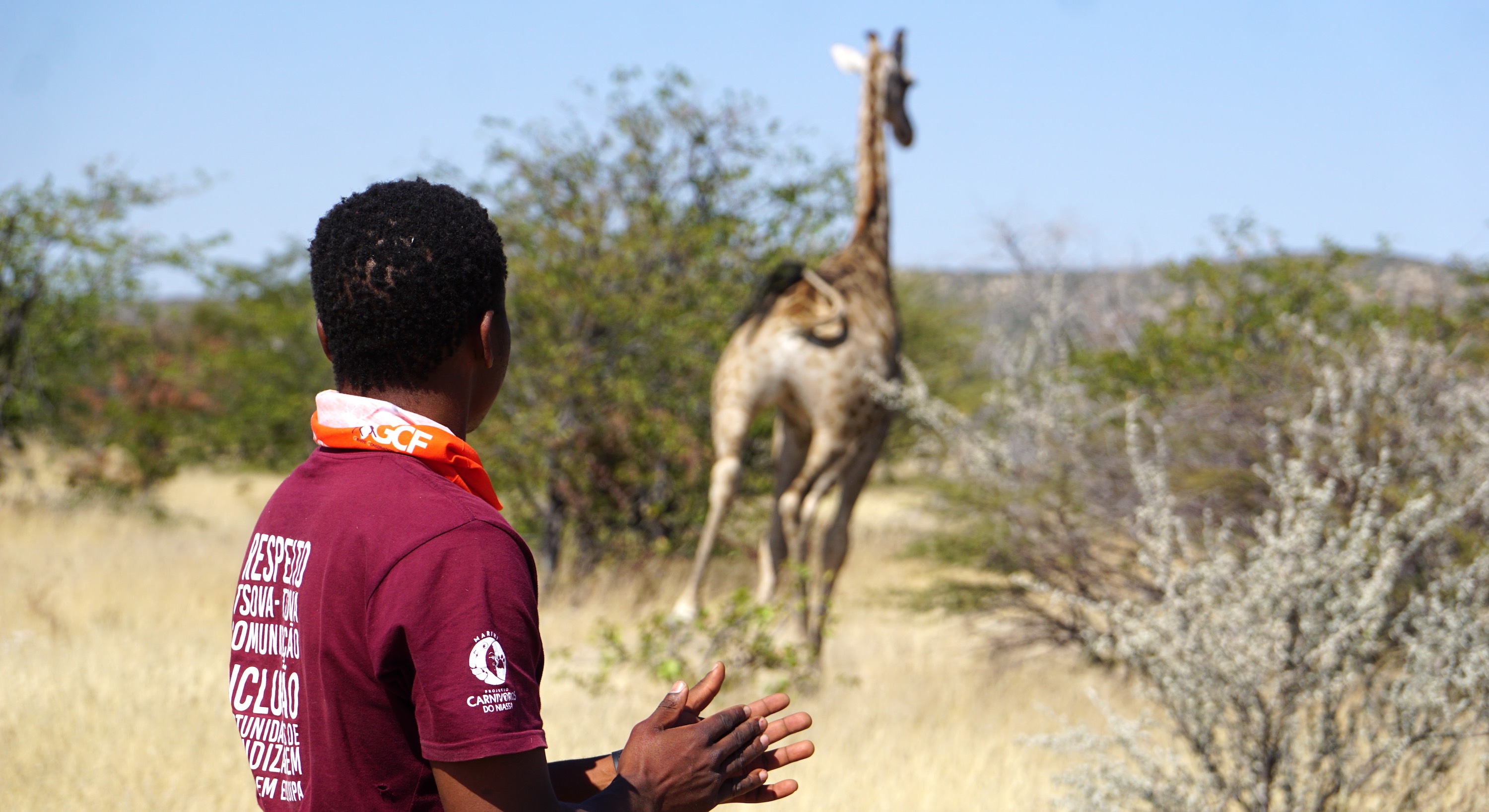
Taking African wildlife veterinary medicine to new heights
16th November 2022
Have you ever darted a giraffe from a helicopter or moved a sable antelope? Have you fitted a satellite tracking device to an elephant or a gemsbok? And have you done all of this in a single day? Eight young African wildlife veterinarians who recently participated in a 10-day hands-on training course would answer with a resounding YES!
During a highly interactive field course at the Etosha Heights Private Reserve, these young veterinarians worked hand-in-hand with several highly experienced Namibian and international wildlife veterinarians. They gained valuable experience in wildlife capture, collaring, tagging, moving of animals and much more, while at the same time supporting the conservation management of one of Namibia's largest private reserves.
As the wildlife conservation field evolves to cover multiple disciplines and a more holistic approach, the wildlife veterinarian has become a critical member of any team. This branch of veterinary medicine, however, is highly specialised and difficult to master, because of the diversity of species which a wildlife vet is likely to encounter – each with a unique anatomy and physiology. Darting, anaesthetising and treating a giraffe is a very different proposition to doing the same to an elephant or rhino or large carnivore, for example.
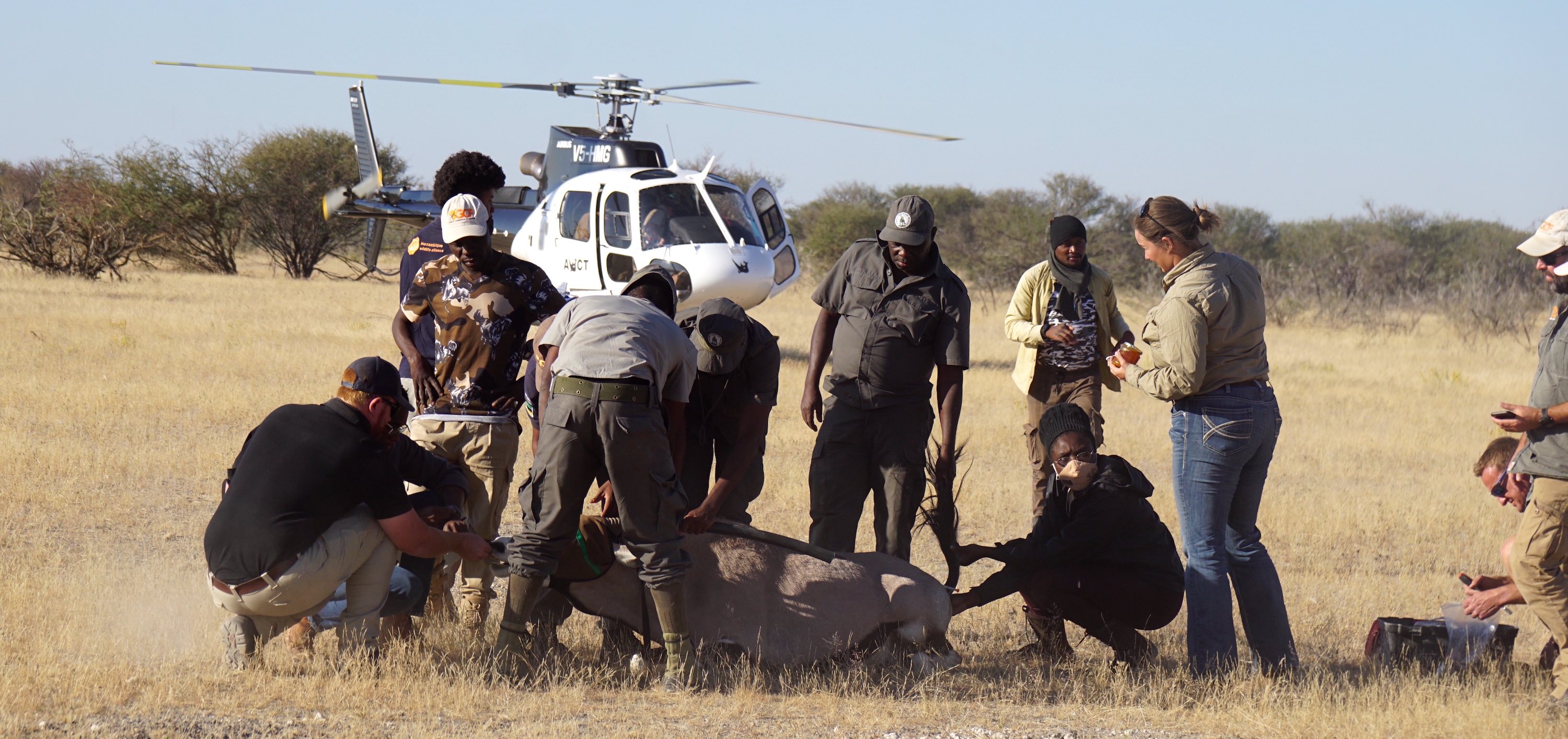
Compared with domestic animals, we have very little information on veterinary care and treatment for each of these species, making this branch of veterinary medicine particularly challenging. Even more concerning is the fact that most wildlife veterinarians enter the field with little knowledge in safe handling of dangerous drugs, darting and capture equipment, and appropriate protocols for handling wildlife, as these topics are not generally part of their university training.
Wildlife vets operating across the African continent are frequently required to work in remote and isolated settings, often with limited experience, practical skills, networks, or confidence to handle wildlife safely. Unfortunately, training opportunities in African wildlife restraint and immobilisation are limited and the cost is prohibitive to most. This places most African veterinarians at a distinct disadvantage, and often results in many African state wildlife departments and conservation organisations being forced to bring in external expertise – often from Southern Africa – rather than developing or enhancing their own local wildlife veterinary capacity. However, this is quite different in Namibia.
The University of Namibia (UNAM) School of Veterinary Medicine, established in 2015, is one of just a few veterinary schools in Africa that offer a solid introduction to wildlife medicine. Veterinarians who graduate from UNAM are equipped to enter the field with a practical working knowledge of the specialised drugs used in wildlife capture as well as species-specific protocols, use of specialised capture equipment, and important legislative requirements for working with wildlife in Namibia. Furthermore, there is a broad and diverse network of highly experienced wildlife professionals (both veterinarians and conservationists) working in the country. As a result, Namibia is well placed to not only support local capacity building among Namibian wildlife vets and conservationists, but to also build the capacity of wildlife vets from other parts of Africa.
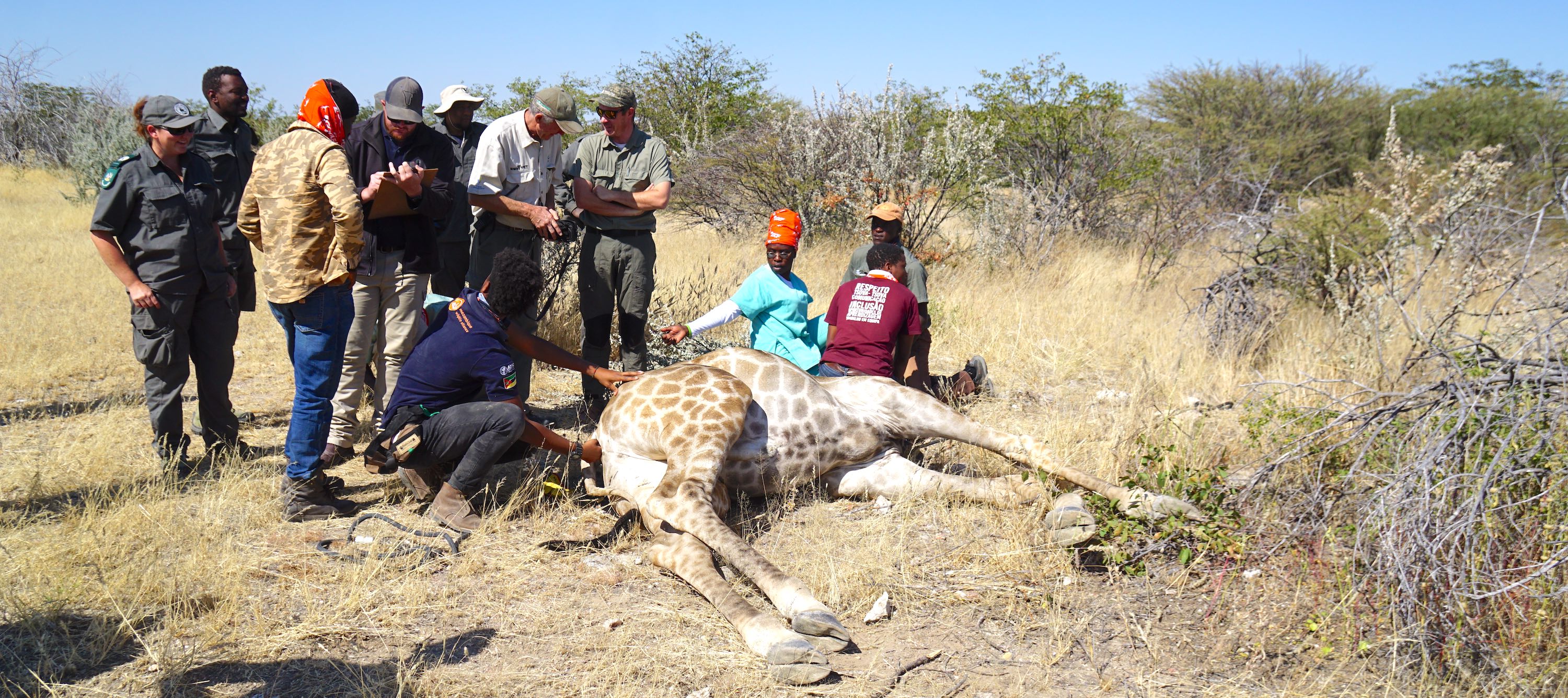
As the global leader in giraffe conservation, the Giraffe Conservation Foundation (GCF) currently implements and supports giraffe conservation initiatives in Namibia and 18 other African countries, often working closely with wildlife veterinarians. Giraffe can be particularly difficult to immobilise due to their unique physiology,
says Dr Julian Fennessy, GCF's Director of Conservation. To ensure their safety, we often bring in vets from Namibia or South Africa if there is not sufficient experience in the country. The problem is not a lack of local vets, but often there is limited expertise in handling wildlife or simply a lack of confidence – confidence that can only be developed through practical experience. This is why we initiated discussions around a course for African wildlife vets here in Namibia.
With this idea in mind, the GCF team approached potential partners in Namibia to develop the inaugural African Wildlife Veterinary Course. GCF, in collaboration with UNAM and the Namibia University of Science and Technology (NUST) – with the support of the African Wildlife Conservation Trust (AWCT), the Wildlife Conservation Alliance, and the Ministry of Environment, Forestry and Tourism (MEFT) – developed a dynamic, practical wildlife veterinary immobilisation course for young African vets. Over time, this course should create a network of capable African wildlife vets who can support multiple conservation projects and help each other through information exchange.
The training kicked off with a three-day intensive lecture series in Windhoek and was open to all Namibian vets for their continuing professional development. Specialist lectures ranged from general physiology and pharmacology to species-specific protocols and human safety considerations to wildlife medicine legislation. Experienced wildlife vets facilitated discussions by sharing different experiences from Namibia and other African countries, particularly related to varied drug and equipment availability, the ethics of wildlife tagging, policies and legislation, conservation science and management, and importantly, partnership development. Participants were brought up-to-date with the latest developments and ideas in wildlife veterinary medicine and had the opportunity to reconnect with many familiar faces as well as establish new professional connections.
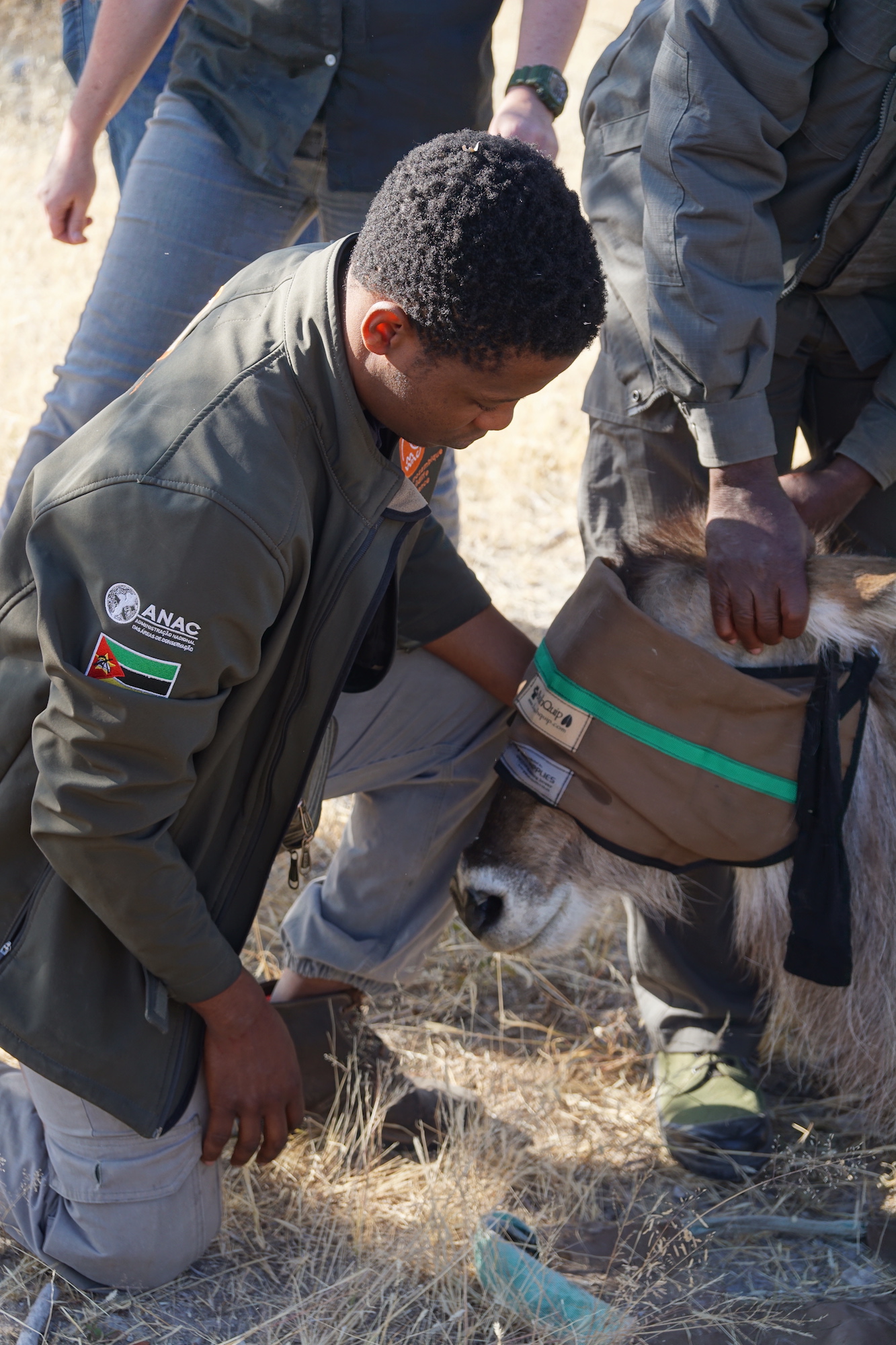
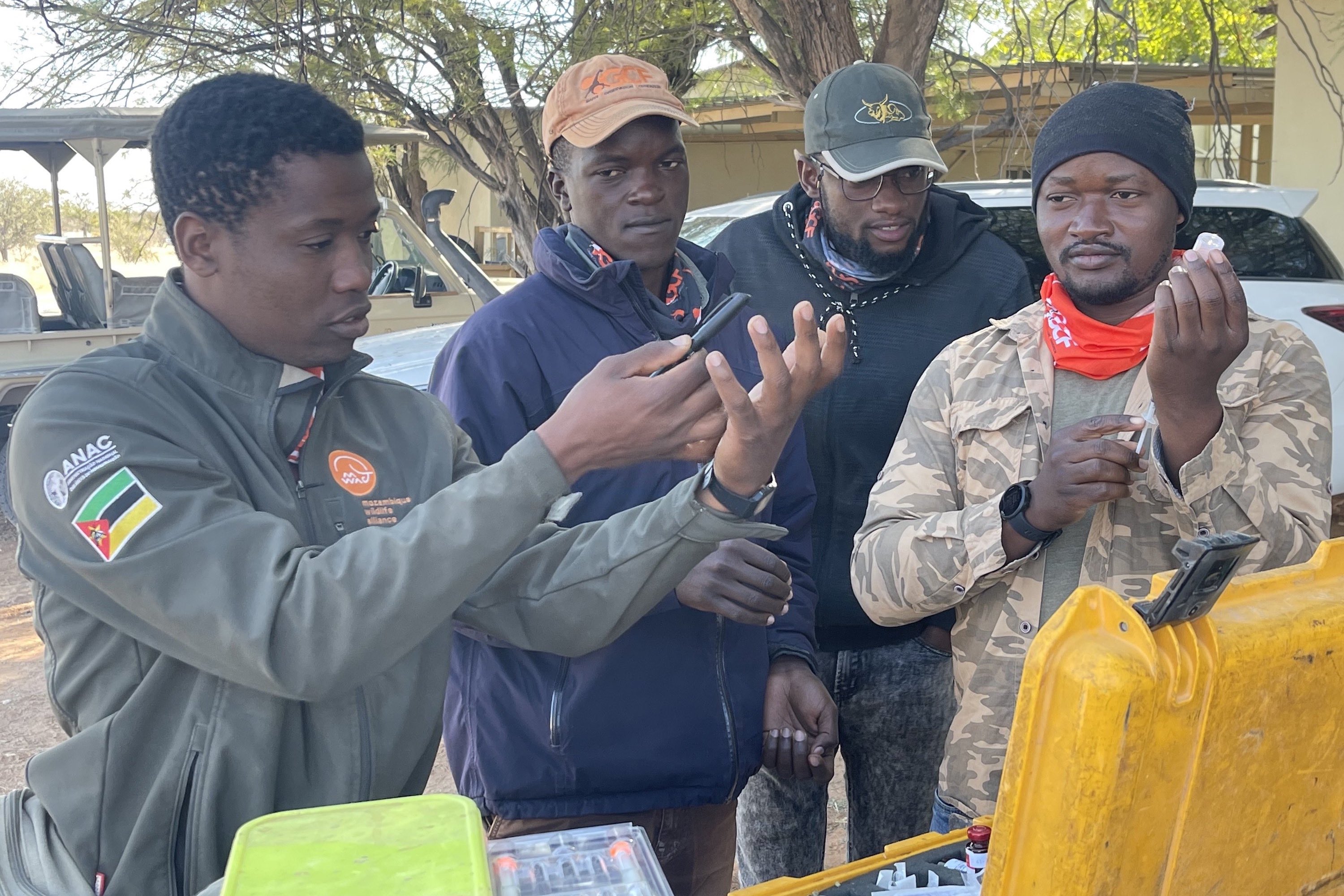
Wildlife in Africa can ultimately only be conserved by African people – they simply need the relevant skills and opportunities to do this effectively,
says Dr Sara Ferguson, GCF's Conservation Health Coordinator and lead veterinarian during the course. Up-skilling young Africans is an important step towards this goal and it is particularly important for wildlife veterinarians, who play a critical role in conservation,
she adds.
Following the lecture series, eight aspiring wildlife vets from the Democratic Republic of Congo (DRC), Mozambique, Namibia, Tanzania and Uganda, four members of the MEFT game capture team, four wildlife ecologists and seven highly experienced wildlife vets travelled to Etosha Heights Private Reserve adjacent to Etosha National Park for the 10-day practical section of the course. Most newly-graduated veterinarians are uncomfortable taking responsibility for procedures they have not performed yet, so this practical exercise on a variety of common African species allowed them to learn by doing. Participation of international vets was made possible through the Namibia Veterinary Council granting temporary registration for the duration of the field course.
The old adage 'I hear and I forget. I see and I remember. I do and I understand' is particularly relevant in the wildlife veterinary arena, for it is only through the actual acts of planning and executing the immobilisation of a wild animal that the veterinarian fully hones his or her skills in the face of challenging situations.
says Dr Mark Jago, Senior Lecturer at UNAM's School of Veterinary Medicine. It was a privilege to be part of something where young vets from around the African continent demonstrate knowledge, passion and skill in abundance, and there are few things as rewarding as being part of an opportunity for passionate professionals to take their skill set to the next level.
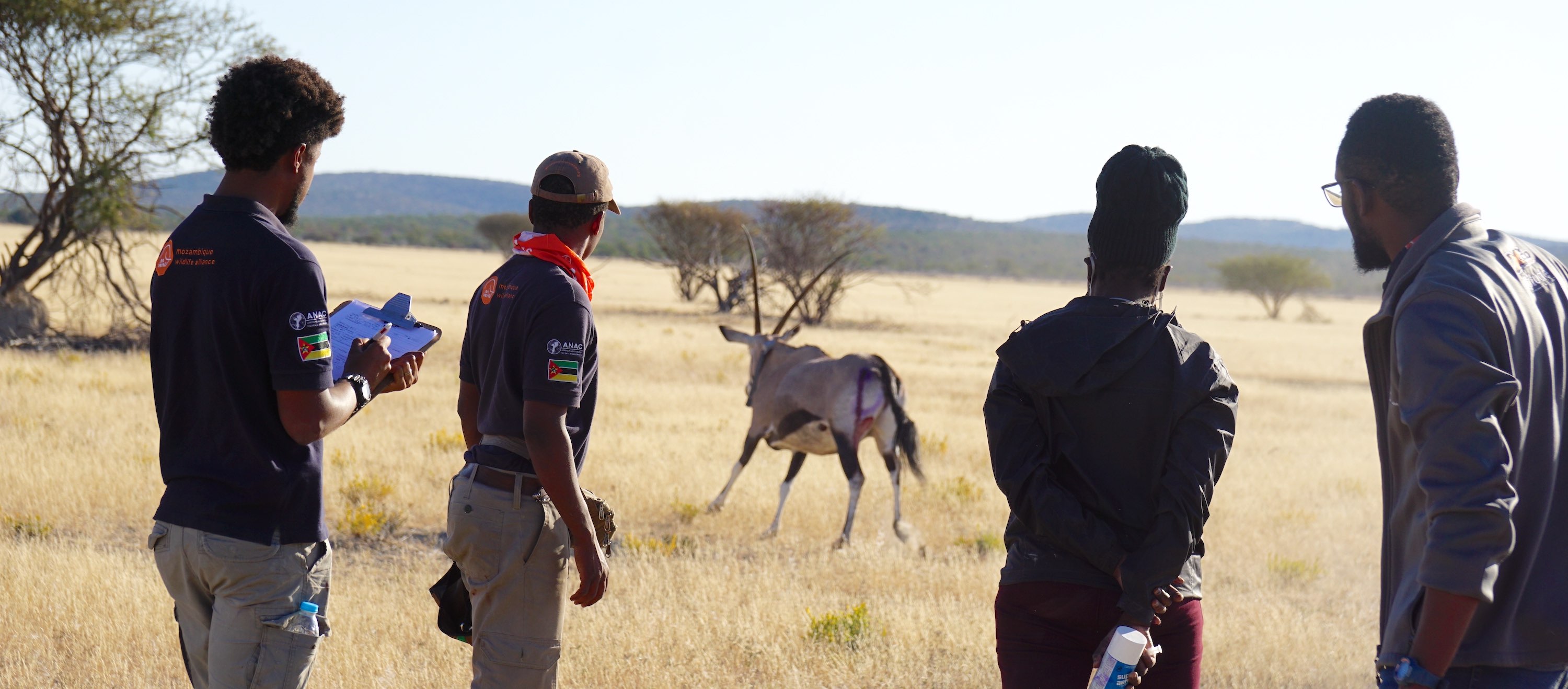
During the hands-on training each of the aspiring African vets took the lead during the immobilisation of at least one animal under the guidance of one of the expert vet mentors. Prior to each immobilisation, drug protocols and appropriate darting equipment were discussed, and each operation (on the ground or helicopter-based) was carefully planned and executed. Open debriefing discussions after each immobilisation offered ample opportunity for a peer-to-peer skills exchange, analysis of what worked well and what did not, including the effects of different drug regimens used for comparison.
During these discussions the participants often became the teachers based on their own experiences, thus creating a conducive and productive training environment. Each of the African wildlife vets brought a host of real-life experiences from their respective workplace and country to the discussions. This cohort of trainees now has an important network of peers for future information exchange, and an impressive resource of knowledge to tap into when back home.
Two of the participants, Drs Hugo Paixao Perira and Hagnesio Chiponde from the Mozambique Wildlife Alliance, said about their impressions: It is incredible how much you can learn in one week. We have worked with wildlife before, but this was an amazing opportunity to gain experience with animals we have not yet encountered in our professional practice. Working together with so many experts in their fields has been invaluable. Every participant and mentor brought something different to the course and having these open discussions has simply been fantastic.
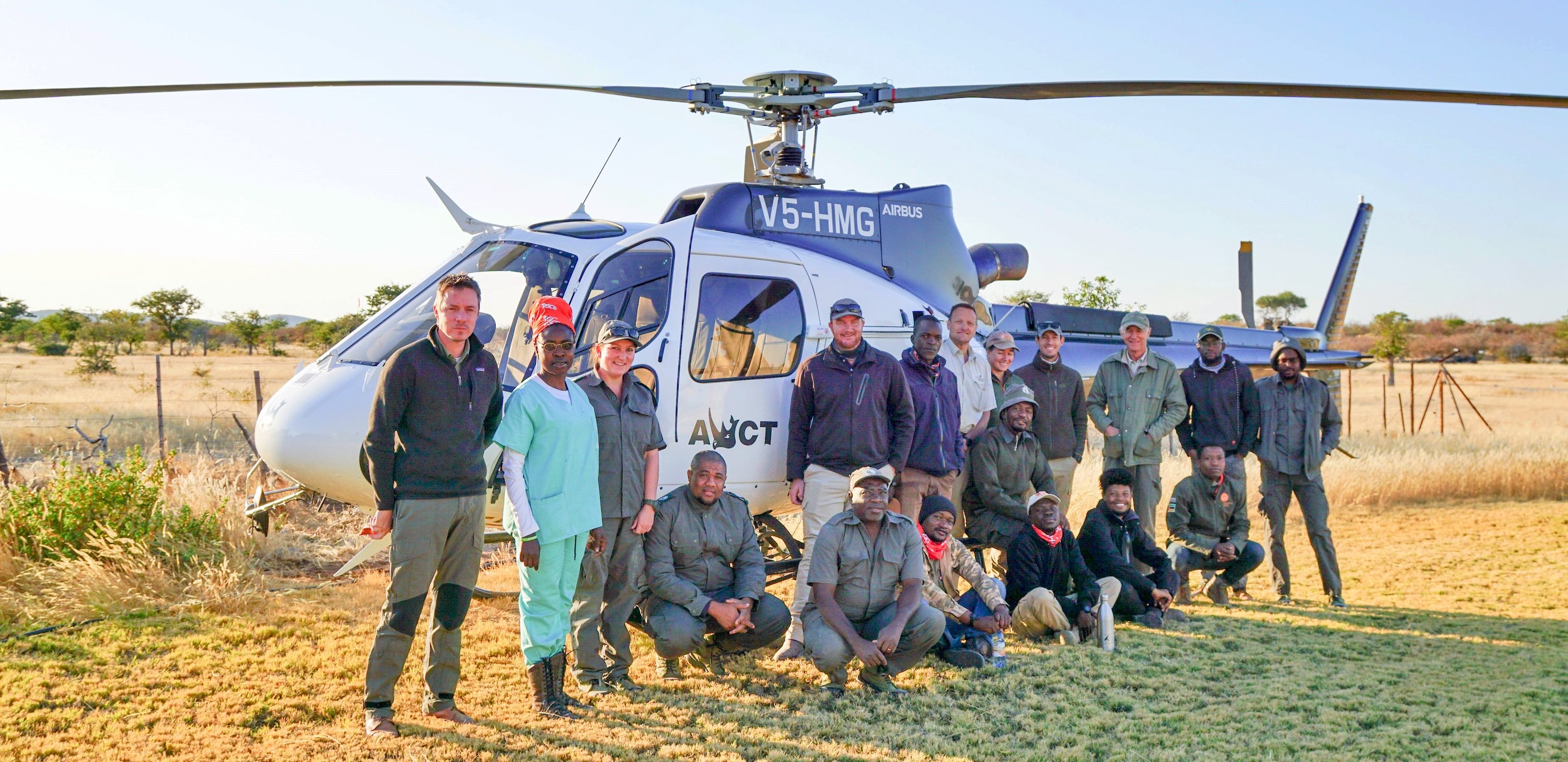
Capturing and moving sable antelope and waterbuck between camps on Etosha Heights Private Reserve, and fitting eland, African savannah elephant, gemsbok, Angolan giraffe, and Hartmann's mountain zebra with tracking devices for remote monitoring were among the field course activities. Solar-powered Ceres Trace and Ceres Wild GPS satellite ear tags were fitted during this course – in most cases for the very first time on species in the wild. Weapon handling and target practice with different dart projector models – both from the ground, from a vehicle, and from a helicopter – were another valuable aspect of the course.
It must be pointed out that all immobilisations in the field were undertaken as part of planned reserve management activities and landscape-level long-term conservation research programmes. The tracking devices that were fitted are part of a research project which explores the effect of different wildlife land use types – national park, private reserve, commercial game farms and communal conservancies – on biodiversity and ecological productivity in the Greater Etosha South-West Landscape (an area of almost two million hectares). Spearheaded by the NUST Biodiversity Research Centre and GCF, this study is a collaboration with many local and international partners and stakeholders.
Dr Tshimbalanga's story
Dr Dominique Tshimbalanga, a DRC vet, shared his story: I always wanted to get involved in wildlife veterinary medicine, but in the DRC this was difficult. When I managed to secure a position with the African Parks Network (APN) in Garamba National Park, I was very excited. However, while I was based in a core wildlife area, I was in charge of the canine unit. I looked after the anti-poaching dogs that were used in the park. For any wildlife work, APN brought in vets from South Africa and Europe and I was mostly not even allowed to shadow them. This was becoming increasingly frustrating and I was almost ready to give up on my dream. But then things changed and I was invited by GCF to participate in this amazing course in Namibia. I learnt so much and now have a network of peers to discuss any questions I may have – and I do have many now that I have been promoted to Resident Veterinarian in Garamba National Park. This promotion was a direct result of gaining new skills and hands-on experience during this course. GCF has given me the key – now it is up to me to use it!
Dr Tshimbalanga's story is more than enough reason for us to hold more courses of this kind in future. Ultimately, we aim to empower young African wildlife vets to become the next leaders in conservation and secure a bright future for wildlife conservation efforts in Namibia and throughout Africa.
Acknowledgements
Participation of the eight African vets was fully funded through the Giraffe Conservation Foundation. The field course was generously supported by the African Wildlife Conservation Trust (AWCT), which kindly made its helicopter available for the training. AWCT, African Wildlife Services, MEFT, UNAM's School of Veterinary Medicine and Wildscapes Veterinary provided valuable veterinary technical skills and mentorship. Financial support was received from GCF and their donors, including the Ivan Carter Wildlife Conservation Alliance and Oklahoma City Zoo. A special thanks goes to Etosha Heights Private Reserve, Natural Selection, the Namibia University of Science and Technology (NUST) and UNAM's School of Veterinary Medicine for supporting this field course.
For articles on similar topics, please click one of the following options:


